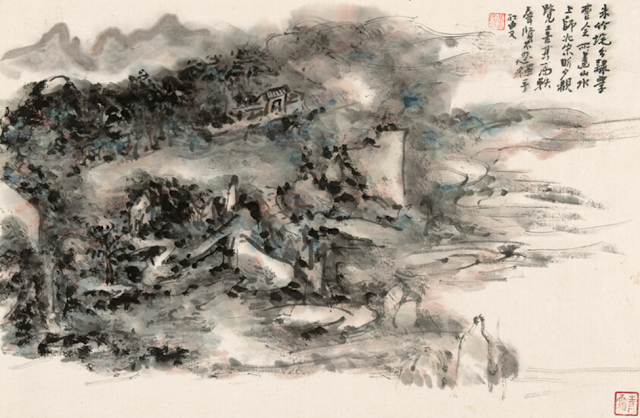The Four Horsemen of the Apocalypse- Albrecht Durer
There are many forms of media that we consider to be art now,
however, when speaking of the Italian or Northern Renaissance you must adjust
your mind to their perspective. The most prolific forms of art during the
Renaissance period are paintings, print, architecture, sculpture, and tapestries.
A series made from woodblock printing or woodcuts The Apocalypse of Saint
John, a depiction of the Bible’s Book of Revelations, is revered as
one of the best printing pieces of the Renaissance. The Apocalypse is
based on the vision of Saint John the Divine, of which the return of Christ and
his Last Judgement on earth would bring the end of the world. The Apocalypse is made up of 12 woodblock prints, carved and designed, by Albrecht Durer. This
book, with its incredible detail, accomplished through woodcut prints, made
Durer extremely famous due to the ability to print multiples and be spread through
countries.
“Durer’s patrons included the uppermost reaches of society,
including Holy Roman Emperor Maximilian I, who awarded Durer’s annual pension” (Minneapolis Institute of Art, 2018). Durer’s reach met all levels of society, his prints and art were a particular
favorite of the Holy Roman Empire until the death of Maximilian I occurred. Durer’s
prints continued to gain in fame and demand, even after his loss of pension
through the Holy Roman Empire. Along with Durer’s ties to the Holy Roman
Empire, within some details of the scene provide a potentially show allusion of
inferences to the Protestant Reformation. The fanged reptile in the bottom left
of the print shows a man within his jaws, the details of this figure has been
interpreted as the imminence of the Protestant Reformation. There is also
speculation that the thundering hooves within this picture are possibly a
foreshadow of the religious reform lurking around the corner during the
Renaissance. This belief is only further supported as “Durer’s Four Apostles
bears inscriptions from the texts of Martin Luther (German Monk and
Professor of Theology that authored the “95 Theses” of which sparked the
Reformation; Hickson, 2015).
Among the 12 prints within The Apocalypse of Saint John
is a piece titled The Four Horsemen of the Apocalypse, a depiction of
the four horsemen that bring forth the end of the world. These four horsemen
are Conquest, War, Pestilence/famine, and death. Within this piece, you will
observe that each of the horsemen have a specific tool that represents who they
are and their role within the Apocalypse. Conquest has a bow, war a sword, a
set of balances for pestilence/famine, and a pitchfork or trident for death. Each
of these tools represent their tales within the bible. The quality of detail
with which Durer used in his Apocalyptic prints established his work as ahead
of its time. As printed art grew in demand, Durer became elite in that no one could match his work. He accomplished such contrast between
the anatomical representations of Human and Horse. The shading is still
perfectly captured allowing for a 3D impression on a 2D canvas. Above all,
Durer remains known for his accomplishment on prints that capture perfect form
of its subjects. Woodcutting is a relief art, imagine, all of these details
being accomplished while carving a negative sculpture (from a solid slab of wood). Durer’s designs always maintained a level of
detail and texture that remained unique. The coloring of the
horses and men within this scene were translated to a black-and-white medium.
An aspect achieved by first going through the piece and detailing which part of
detail should forefront in impression or slightly overlap with other details, a detail
shown by deeper or lighter shadings.
Below is a link to the full published works of Durer’s The
Apocalypse of Saint John. (1498)
http://germanprints.ru/reference/series/apocalypse/index.php?lang=en



What a well-written blog post, I enjoyed reading it! The different styles and techniques used by Albrecht Durer seemed to be unique for the time period. The work that would have to be put into carving the wood and having certain areas shaded differently must be tedious for someone with much patience. At a glance, this picture looks hand drawn, not wood pressed; it's beautifully done. The details you gave about the process Durer used to design, carve, and method of his wood print, The Four Horsemen of the Apocalypse, made me understand the process of wood-pressed art. I appreciate you adding that in there; while I understood what a wood press was, your detailed description helped fill in the holes of questions I may have. Your wonderfully written post gave me new information about Renaissance artwork; thank you for sharing, Anselm!
ReplyDeleteI'd heard the term "the four horsemen of the apocalypse" a million times before, but somehow have never thought to find out what they really were. So, right off the bat, I was learning something new. As you pointed out, the shading in this piece is very beautiful and of course is essential to how it conveys depth but also emotion, as it's a black and white medium. The longer I look at this piece, I'm more amazed by how much detail is present in the image.Thanks for sharing this!
ReplyDelete